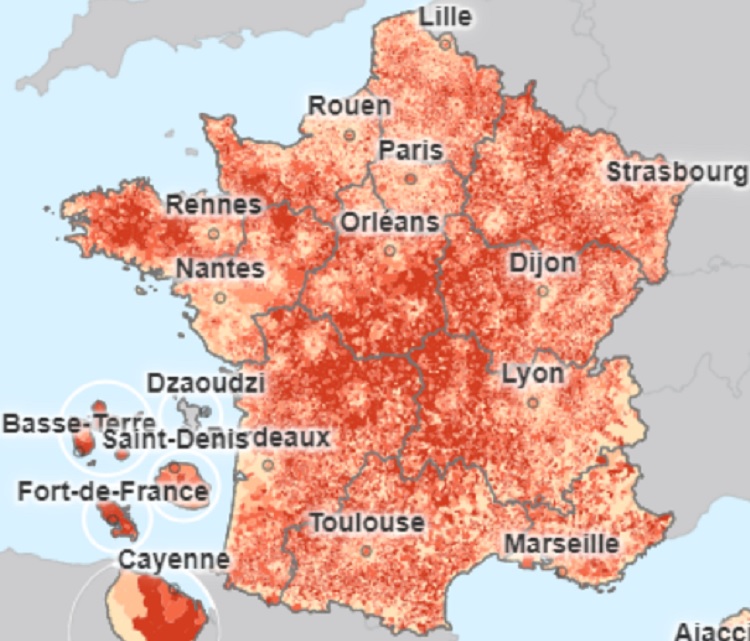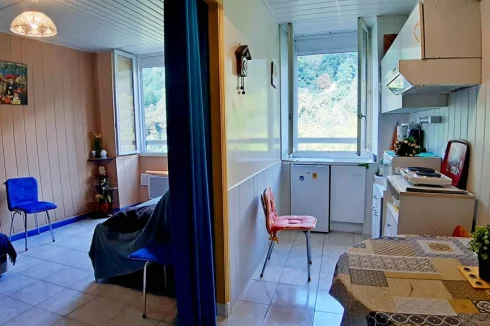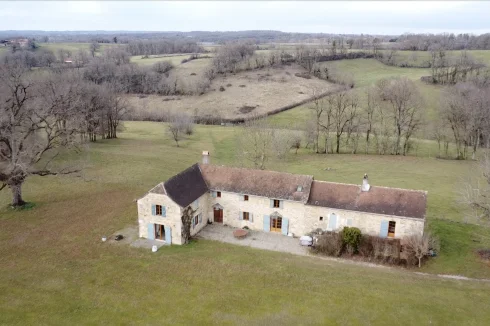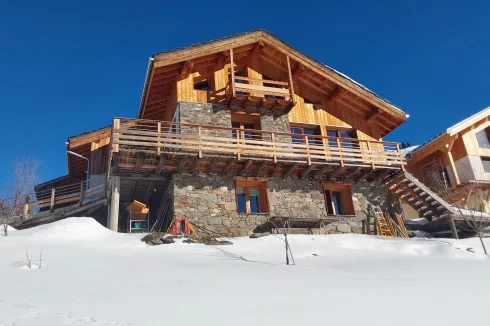Buying an Empty/Abandoned Property in France
Wednesday 08 September 2021
Using the French land register to find the owner of an abandoned or empty house.
Finding an abandoned old property and buying it at a knockdown price is the dream of many French property buyers.
Although in practice it is one that it is difficult to realise, there are probably more opportunities to do so in France than in many other countries.
According to the French national statistics office 'Insee' there are over 3 million empty homes in France, or 8.4% of the total housing stock.
Many of those properties will be those vacant in the process of sale or renovation, but the vacancy rate in some areas is so high (over 20% in 17% of communes) that the normal operation of the market cannot explain it.
As might be expected, most vacant properties are located in less popular areas, such as Centre, Massif Central and Grand Est but there are also significant vacancy rates in Normandy and Brittany and many other parts of the country, as shown on the graphic below. Areas in dark red have more than 11% of the stock vacant.

The first problem for a prospective buyer is finding such a property. It might be easy enough to achieve by simply walking and asking around in a small village or town, but it is herculean task for properties in the countryside, the favourite hunting ground of international property buyers.
There is no local or national database of vacant properties that is available to the public, and even official records are only available from the public census, the last of which took place in 2016, so will be substantially out of date.
Local tax offices and councils will be aware of those properties vacant from tax records, but they would be unwilling to supply a list of such properties to a member of the public.
One approach is to ask around in local cafes and bars, but you might get some strange looks if not done in the right manner.
As a result, more often that not, prospective buyers stumble upon one, in the search for another property or whilst undertaking a leisure ride.
Once you have found a property you the main routes to trace the owner are:
- Neighbours
- Local Council
- Cadastre
- Land registry
i. Neighbours
The quickest and cheapest solution is often to simply ask neighbours, but you may be surprised at just how little they may know about a neighbouring property. They may only know the name of the owner, but not their whereabouts. Nevertheless, this has to be the starting point, as such enquiries often yields other information, such as why the property is empty. Clearly, at least a basic understanding of the French language is a most useful prerequisite to such searches.
ii. Local Council
Only if you had found and clearly identified a specific property would the local council (mairie) be willing to supply you with the name of the owner. The mairie is authorised by law to release the name and address of the owner of a property.
However, the name provided may be of a deceased person, in which case you would need to do some additional research to locate any heirs, or the notaire who may be handling the succession process or potential legal proceedings related to the property.
In order for la mairie to locate the name of an owner, you would need to provide the address of the property if available, or the parcel number of the property from land registry records.
iii. Searching the Cadastre
The 'cadastre' is the land registry map, on which all property and land is assigned a parcel number. The cadastre does not, however, fix the limits of the boundary of each property; the role of the map is purely fiscal, used in the determination of your local rates bill.
To search the cadastre on-line there are two alternatives, although neither of them will provide the name of the owner of the property:
a. The first is to use the main site at Cadastre, which contains a cartographical record of all land parcels in France together with the footprint of each building, roads, rivers etc. The website has an English language search function although the French version seems to operate more smoothly. If you have the address of the property you can enter it in search, but by entering in least the name of the commune you can then search the area for the relevant parcel, using the zoom function. Each commune is divided into sections, so if you do not have the full address you will need to identify the section in which the property is located and then find it on the map using cartographical information on the map. You need to click on « s’informer » on the left, then select the parcel in which you are interested and the « valider » bottom right of the page. That will give you the surface of the parcel, its reference and address.
b. Perhaps a better alternative is to go the mapping service provided by the Institut national de l’information géographique et forestière - IGN) at the Geoportail. Enter the address of the property or commune on the opening page and you will get a birds aerial view of the area, with the ability to zoom to narrow the search and see more detail. To the left of the page there is the menu for 'Carte' from which you go to Parcelles Cadastres. It will then show the relevant section number of the cadastre; click and zoom down further and you will obtain all the parcels and the full reference number of each parcel, including the name, or lieu dit, of the property. There are a range of other overlapping maps you can use, making it a very enjoyable and useful search tool. You can print off any of the plans.
If you are having problems with the on-line sources, you will find that the mairie will have hard-copy plans of the cadastre in their offices, which you should be able to view. You can also view them in your local tax office, normally a branch of that office, called the service/centre des impôts fonciers.
iv. Land Registry Service
To find the identity of the owner of a parcel, you can also contact the French land registry service, called Service de Publicité Foncière.
The service forms part of the tax authority and you can find a list of all the offices at Annuaire des Services de Publicité Foncière. It will provide you contact details enabling you to reach your local departmental office by mail, telephone or to visit personally.
A better approach, provided you feel you have the confidence and competence to do it, is to submit an application to them for the information you seek, using one of the available forms for the information you seek eg Demande de renseignements.
There is a small charge for the service, eg €12.
However, do not hold your breath on an early reply; you may be lucky enough to get a prompt response for a simply enquiry, but if you seek title documentation then expect to wait several months at least.
Family Disputes
Even if you are able to find the owner, several obstacles to securing the property lie ahead. Clearly, there would be a need to be agreement on the purchase price, but the more frequent problem is that the property may be in multiple ownership, and securing the agreement of all owners is often very difficult.
Indeed, one of the reasons why there are so many vacant homes in France is because of French inheritance laws that divide an estate between the heirs, and a family feud between them prevents any early resolution. It may also be difficult (impossible) to trace one or more of the owners. That may well result in no division of the property having taken place, with a file that can then sit in the pending tray at the office of the notaire for an eternity.
Related Reading:
Thank you for showing an interest in our News section.
Our News section is no longer being published although our catalogue of articles remains in place.
If you found our News useful, please have a look at France Insider, our subscription based News service with in-depth analysis, or our authoritative Guides to France.
If you require advice and assistance with the purchase of French property and moving to France, then take a look at the France Insider Property Clinic.





